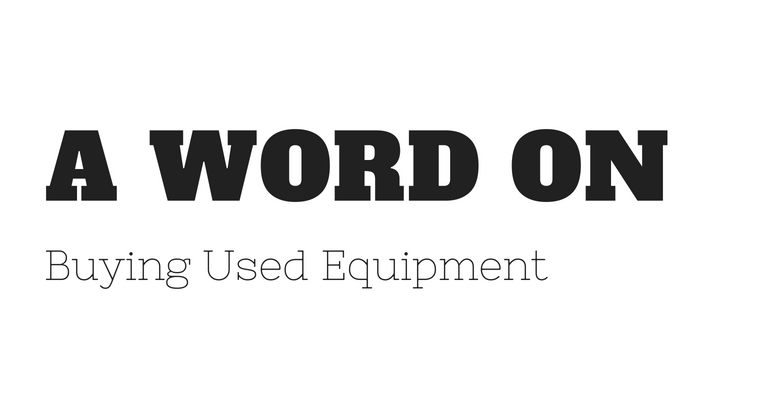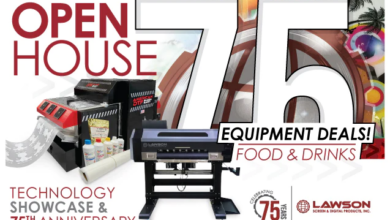When we talk to people about buying equipment, we typically tell them to think of it like buying a car. This becomes even more true when considering the purchase of used equipment.
If you are looking to buy a used piece of equipment, you are not alone. Between individuals, brokers, dealers, and manufacturer sales, many used pieces of equipment exchange hands each year. With so many choices, finding that one right press, embroidery machine, or other piece of decorating equipment can be a challenge.
You’ll find yourself asking these questions:
- How much can I afford?
- Do we have the work to justify the purchase?
- Can we live without it?
- Is it a need or a want?
A tight budget means you need to spend even less. Used equipment will need extra attention from time to time in maintenance and the like. There are the other ownership costs we forget to account for, such as unexpected repairs or extended warranty. Knowing your budget is a matter of knowing what you can spend and what you need. Once you know your budget, nothing is worse than purchasing used equipment and discovering it’s full of problems.
It’s no secret that some manufacturers build a bigger, faster, more accurate machine, but they might cost more than a comparable entry-level model. If you’re looking to save money, consider different models. Build a list of two or three models that might meet your needs and fall within budget. If you plan to buy a press that is less than five years old, consider one that is certified or reconditioned that has warranties backed by the manufacturer or dealer. Also, try to get a maintenance history. This is an essential early step. If the equipment has a bad or no maintenance history or report, reconsider.
A test drive, so to speak, is the best way to know if it is the right make and model. It’s also an excellent way to assess the equipment’s condition. However, this shouldn’t be your only means of inspection. Consider having it inspected by an independent service technician if possible. Keep in mind that rust, corrosion, and other problems can be hidden by fresh paint. Many machines do not have an odometer, so documented proof of its life is helpful information. Knowing how many prints are on it can give you an accurate idea of how much it has been used. You also can’t forget the owner’s manuals or any schematics that came with the equipment. This can be used for preventative maintenance once you own it.
Additionally, protecting the investment should be a priority, and a warranty is helpful. All equipment is bound to break down at some point, even with regular maintenance. Without a warranty, a breakdown means a loss of time and money. The cost of parts, labor, and downtime could be a detrimental setback. When this happens, maintenance is necessary. How accessible is service? Parts?
As Glen Carliss writes about resale value; first and foremost, comes the equipment’s condition. Keeping it maintained and in good working order is critical when it comes time to sell. The equipment manufacturer’s reputation in the industry also plays a significant role in resale value.
Looking at new, shiny equipment is exciting, but don’t let that on its own be the reason for purchase. Take the time to analyze the equipment’s advancements from previous editions and its current technology. Ask other shops what equipment they use and how long it has been running. Think about longevity when making this investment. An established relationship with the manufacturer or dealer and verified information about the equipment are also helpful buying factors to consider. Reach out and get additional information about the manufacturer or dealer by calling former equipment owners, researching online, and just talking to peers.
It’s easy to get confused. There’s a lot of used equipment out there, much of which is similar. Model, size, print stations, flashes, and capabilities are a few additional things to consider before you begin searching for the perfect piece. Many times, there is more than one option to suit, which is where documented information about the equipment becomes extremely valuable.
Take the time to conduct proper research and inspection, and you’ll be on your way to finding your next workhorse.





